
Types of ham knife
Having a good set of ham knives is essential to slice ham with the perfect thickness. It's not just about knowing the techniques and steps to cut ham, but also having the necessary tools to accomplish it. Discover the various types of ham knives and their respective uses.
At Enrique Tomás, as ham masters, we'll tell you everything about them!
Ham Cutting Knives
You'll find a wide variety of ham cutting knives in the market, but our recommendation is that you don't need to have all of them. Instead, focus on having the appropriate ones that are comfortable for you and, of course, make sure they are well-sharpened.
Ham cutting is an art, but you must know the cutting techniques and have the necessary tools to carry it out. If you don't have proper ham knives and use the same ones you use for cutting meat or fish, you risk altering the flavor of your ham slice.
If you've purchased a whole Iberian ham and want to preserve its flavor nuances, let's delve into the types of ham knives you need.
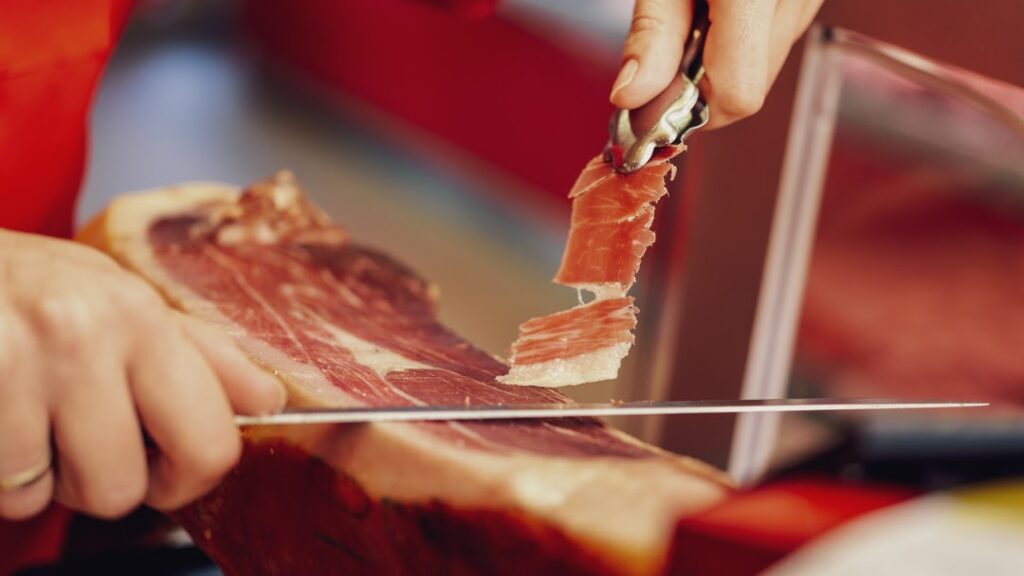 Slicing Ham
Slicing Ham
Honing Steel or Sharpening Rod
This tool is indispensable for keeping your ham knives sharp and ensuring they cut perfectly every time. The sharpening rod is usually around 30 cm long with a rounded blade.
To use it, all you have to do is move the knife up and down with a back-and-forth motion, then clean it thoroughly and store it properly to prevent damage. For perfect ham slices, it's ideal to sharpen the knife just before you start cutting.
At Enrique Tomás, you can find the sharpening rod in an affordable set along with the paring knife!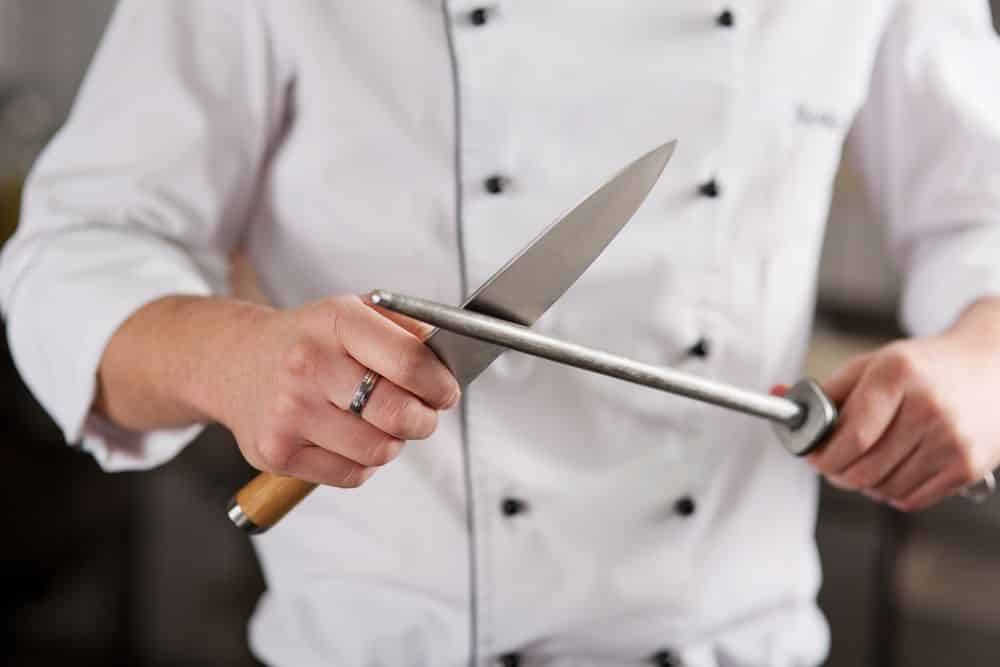
 Enrique Tomás Ham Knife and Sharpening Rod Set
Enrique Tomás Ham Knife and Sharpening Rod Set
The Paring Knife
The paring knife is also essential for cutting ham. With this single knife, you can perform several tasks related to slicing. Its primary function is to clean the ham by removing the layer of fat that covers it, and the second function is to mark around the bone for better cutting or deboning. This knife has an elongated blade, is rigid, and its blade is wider at the handle and narrower at the tip.
It's the first knife you should use and probably the last one too.
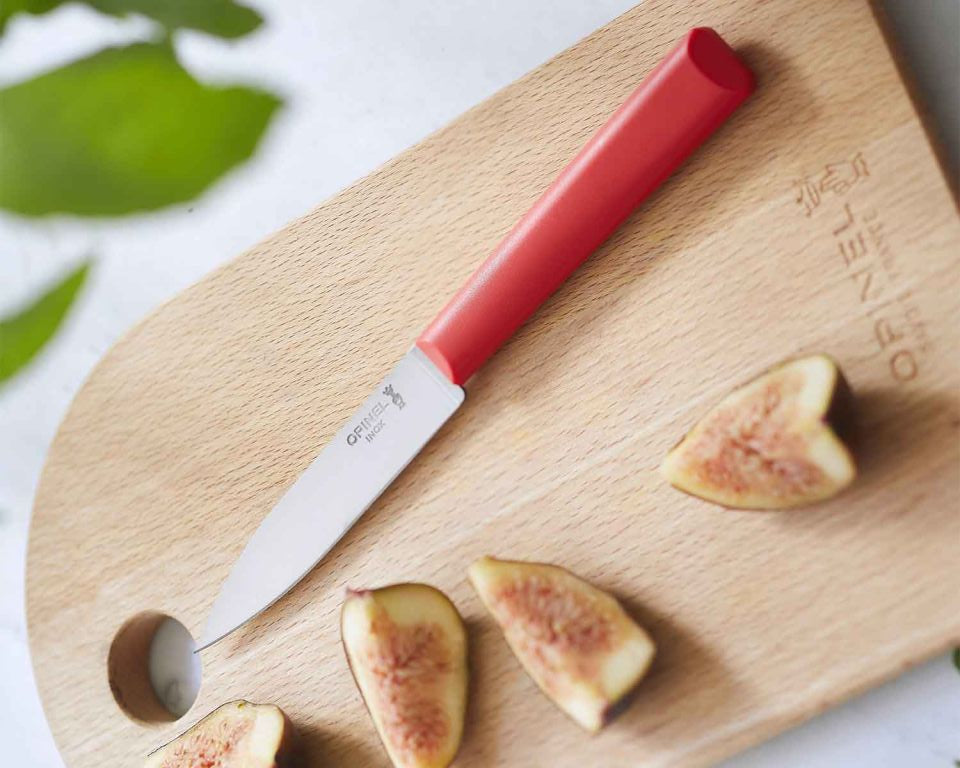 Paring Knife
Paring Knife
Ham Knife
The classic ham knife is what comes to mind when we think of this tool. It's about 30 cm long, with a sharp blade that ends in a point. If you purchase a professional ham knife like the one from Enrique Tomás, it will be a tool for a lifetime. It's made of stainless steel and designed to meet the demands of a true ham lover. High-quality, ideal for slicing, resistant, and flexible.
Remember, you can achieve slices with the perfect thickness only with a properly prepared and well-sharpened ham knife. When using your ham knife, keep in mind that it's very sharp, and not using it properly could result in injury. When using it, always remember that your hand must be positioned ABOVE the area you're slicing. This way, if the knife slips, you won't cut yourself.
 Enrique Tomás Professional Ham Knife
Enrique Tomás Professional Ham Knife

How to Choose Your Ham Knife
Here are some tips you should consider before buying your ham knife:
- Size: Ham knives are longer than regular knives, usually around 30 cm long.
- Handle: Most knives have handles made of stainless steel or plastic. Choose the one that feels most comfortable to you.
- Knife tip: The tips can be pointed or rounded. Although it's easier to find knives with a pointed tip, this doesn't affect the cutting. If you prefer a rounded tip, go for it.
- Blade: Blades can be smooth or have a textured surface. Knives with small waves on the blade are designed to make separating the slice from the piece easier. However, this is just a bonus. The most common ham knives have smooth blades.
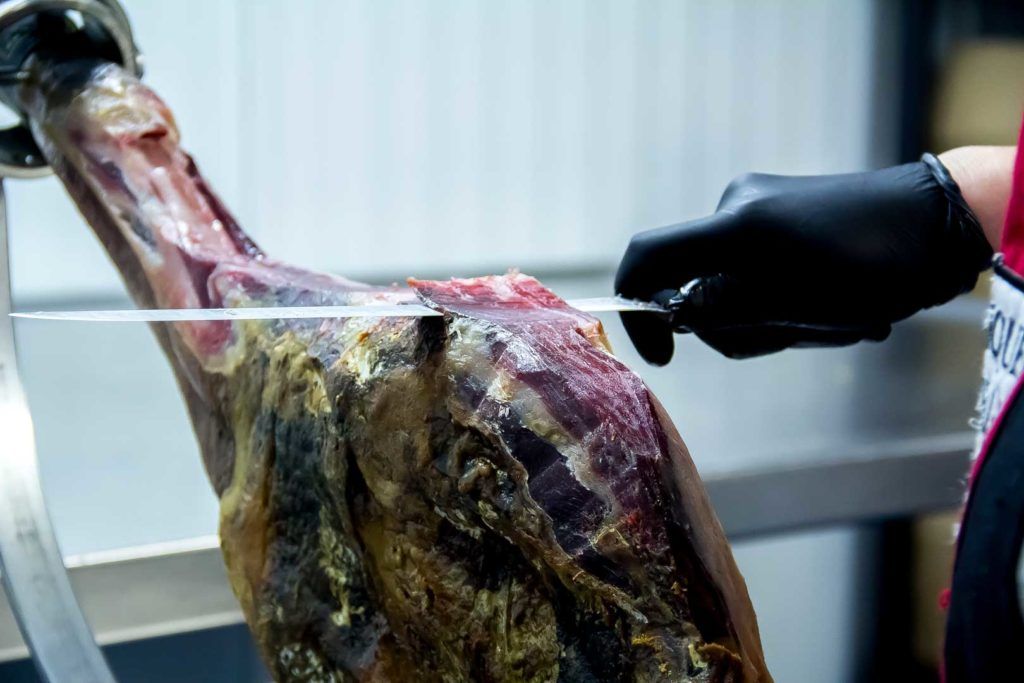
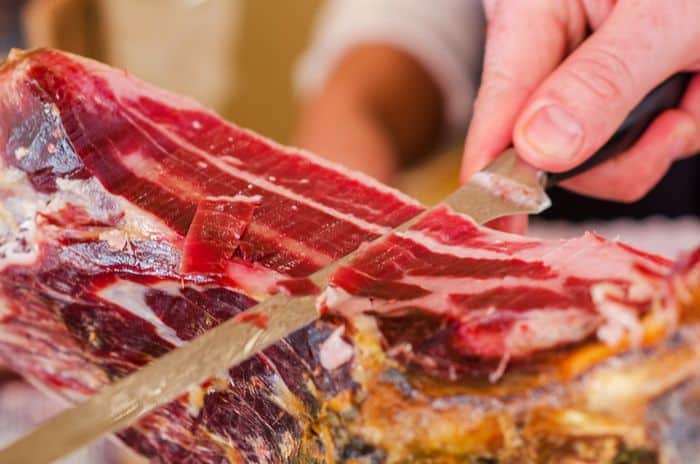
Now that you know the types of ham knives, all you need to do is get your kit! And remember, it's not about the quantity of tools but having the right ones. Once you try them, you'll see how you achieve the perfect slices. The trick to achieving that: the slices shouldn't be too thick or too thin. The key is to have the knife's presence slightly behind each slice. This way, you'll make the oil melt in your mouth and experience all the flavor nuances of your ham slice, making the experience truly unique!
Finally, if you have the necessary tools and your ham piece well secured on the ham holder, we'll show you how to start slicing step by step in the following video:
You might also be interested in:





